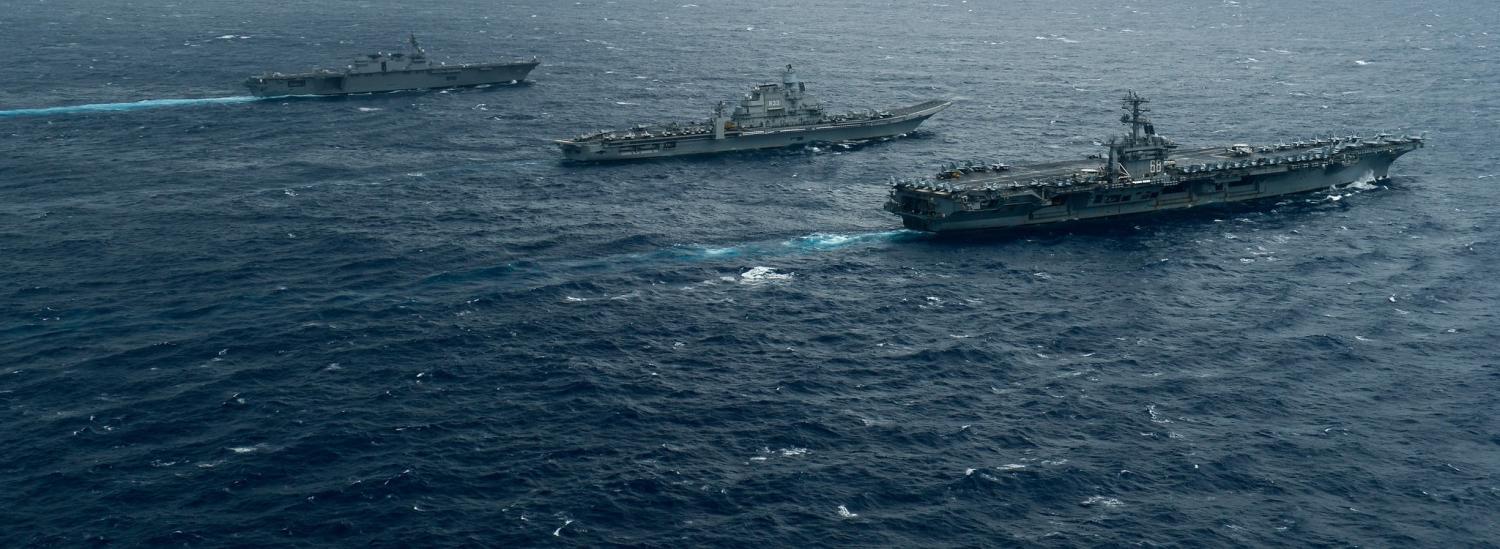Recent news that Australia’s Foreign Minister has indicated interest in taking part in a resurrected US-Australia-Japan-India quadrilateral dialogue on the sidelines of the upcoming ASEAN Summit is to be welcomed. It is an indication how much the strategic situation in the Asia Pacific has shifted. Positive as this latest development might be, it should nonetheless be regarded with caution.
The ‘Quadrilateral’ was never an alliance. It was a loose geostrategic alignment of states concerned with China’s potential challenge to their interests, but simultaneously, unwilling to provoke China by assuming the obligatory mechanisms of an alliance. Even then it buckled under pressure. Accused of being a NATO-in-the-making, it was far too full of self-doubt to be effective.
Chinese diplomatic opposition to the forum was keenly felt in June 2007 after Beijing issued demarches to all four countries, but Canberra’s asymmetric economic dependence meant that Australia felt it more than most. Within months of winning the election in 2007, Kevin Rudd’s Foreign Minister Stephen Smith unilaterally withdrew Australia from the quadrilateral during a February 2008 meeting with China’s Foreign Minister Yang Jiechi. While Australia was not the only country suffering internal divisions about the issue – there were doubters among the senior-most levels of the US Department of State and the Indian Ministry of External Affairs – it was the first to break ranks.
At the root of Australia’s indecision has been something common to all the great and middle powers in the region: how to apportion China a regional leadership role while attempting to shape its choices away from illiberal or hegemonic designs.
Sadly, in the years since, China has shown ever-increasing signs of assertiveness in its approach to the region. It has used military coercion and an unprecedented militarisation of maritime sea lanes in the South China Sea; its strategy is both at odds with regional practice and the UN Convention on the Law of the Sea (UNCLOS). Despite regional attempts to resolve disputed maritime claims peacefully, Beijing has cynically played for time over the establishment of a Code of Conduct while using economic leverage to prevent ASEAN unanimity.
China’s geostrategic ambitions have become global with the massive, multi-billion dollar, decades-long Belt and Road Initiative (BRI). It promises a new age of Chinese leverage over the Asian heartland, as well as a real attempt at internationalising the RMB without giving over political control.
No doubt, this dialogue on the sidelines of the ASEAN Summit will feel the full weight of China’s diplomatic pressure. Even in announcing its openness to a meeting, Bishop’s language was ambiguous: '...it’s natural that we should continue to have such discussions, but there is nothing formal. There is no decision on that.' Chinese diplomats are likely to issue demarches and make phone calls to all four capitals.
While no one wishes to have a China backed into a corner, fearful of a NATO in Asia, is that really what is taking place? From one perspective, a rising power with quasi-hegemonic designs is trying to prevent a loose coalition of states from organising themselves in a constraining and deterring bloc. And while it is absolutely in China’s interests to do that, is it in ours to acquiesce?
If the quadrilateral format is embraced, the four may find that despite initial protests, Beijing will ultimately accept that each have their own interests and the power to define those interests. This week we have seen Beijing accept – after a year of diplomatic pressure – Seoul’s decision to deploy THAAD missile-defence systems on its soil. South Korea stuck to its ground while simultaneously seeking to ameliorate China’s concerns, eventually winning China over.
The quadrilateral members should adopt that lesson as their own. We must ask ourselves: by avoiding collective security arrangements in 2008, did we persuade China to behave as a model citizen in the region? We must choose actions that meet our own strategic concerns and not China’s. For this reason, the quadrilateral makes sense.

